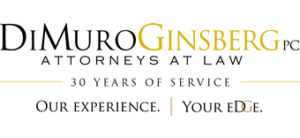Venue in Patent Infringement Cases – Where Do We Stand?
As has been widely publicized, the Supreme Court recently affirmed that the rules governing where a patent infringement case may be brought against corporate defendants are distinct from those involving other causes of action in the federal system. Specifically, the Court held that in patent cases, the relevant statute, 28 U.S.C. § 1400(b), mandates that the case be brought where the accused corporate infringer is incorporated or has committed acts of infringement and has a regular and established place of business, whereas in other federal cases, venue is proper wherever the corporation is subject to personal jurisdiction, 28 U.S.C. § 1391(c). TC Heartland LLC v. Kraft Foods Group Brands, LLC, ___ U.S. ___, 137 S. Ct. 1514, 1516-17 (2017). The Court affirmed that its 1957 decision in Fourco Glass Co. v. Transmirra Prod. Corp., 353 U.S. 222, 226 (1957) still controls on the issue of venue in patent cases, and held that the ruling by the Court of Appeals for the Federal Circuit (“Federal Circuit”) that Fourco had been overruled by intervening amendments to the venue statute – a rule that had controlled in patent infringement cases for 27 years – was incorrect. Id.
The impact of the TC Heartland decision is, on the one hand, straightforward, but not so much on the other. It is now clear that for purposes of patent infringement, a corporation “resides” only where it is incorporated. TC Heartland, 137 S. Ct. at 1517. At the same time, the rule still stands that a defendant can waive its challenge to venue, and a venue challenge must generally be made at the pleadings stage. Leroy v. Great W. United Corp., 443 U.S. 173, 180 (1979); Fed. R. Civ. P. 12(b), 12(h)(1). Accordingly, must cases where venue was proper under the now-rejected Federal Circuit rule be transferred in light of TC Heartland’s change of the law? And, what are the parameters of a “regular and established place of business” under TC Heartland? An early decision from the Eastern District of Virginia (“EDVA”), one of the first decisions applying TC Heartland, addresses both these questions.
Cobalt Boats, LLC v. Sea Ray Boats, Inc., No. 2:15cv21, 2017 WL 2556679 (E.D. Va. Jun. 7, 2017) involved a litigation filed in 2015 under the Federal Circuit’s interpretation that venue in a patent infringement case is proper in any district where the corporation is subject to personal jurisdiction. The defendants had initially conceded that venue was proper under what they believed was controlling law, but had moved to transfer to a more convenient forum. Id. at *1. Defendants’ motion was denied, and the parties moved forward with the litigation, including claim construction proceedings, a motion for summary judgment, and motions in limine. Id. Days after the final pretrial conference, the TC Heartland decision issued and defendants brought a renewed motion to transfer. Id.
The EDVA first found that defendants’ delay in bringing the venue challenge was not excused as an exception that is available “when there has been an intervening change in the law recognizing an issue that was not previously available.” See Holland v. Big River Minerals Corp., 181 F.3d 597, 605-06 (4th Cir. 1999). The EDVA found that defendants’ “assumption that Fourco was no longer good law was reasonable but wrong,” and the delay was therefore not excused because the law technically had not changed. Id. at *2-*3. Notably, the EDVA also found that the argument of the second defendant failed because it wanted to remain in the same jurisdiction as the other defendant, and had therefore waived its right to challenge venue. Id. at *4. In response to alternative theories of proper venue put forth by the plaintiff, the EDVA left open the possibility that proper venue could be established under TC Heartland by showing, for example, that salespeople in the district or activities such as warehousing by a related entity (e.g., a subsidiary or sister entity) related to the infringement could constitute a regular and established place of business. Id. at *4. The EDVA’s decision was upheld by the Federal Circuit two days later. See In Re Sea Ray Boats, Inc., 2017 WL 2577399, at *1 (Fed. Cir. Jun. 9, 2017).
From this early decision, we now know two things. First, transfer will not necessarily be automatic, despite TC Heartland’s seeming reversal of law that has been followed for 27 years, at least in cases where substantial preparation for trial has taken place. Second, the boundaries of what constitutes a “regular and established place of business” remain undefined, and must be determined under the facts of each case. What does seem clear is that “regular and established places of business” are not just headquarters. Thus, venue in jurisdictions with a large concentration of tech centers, such as Northern Virginia, seems likely to be proper in a large number of cases.
Cecil Key is a member of DiMuroGinsberg’s IP Group, along with Jay Kesan and Teresa Summers. For more information about this topic or any Intellectual Property matter, you may contact Cecil at ckey@dimuro.com.
To download a copy of this white paper, click here.
